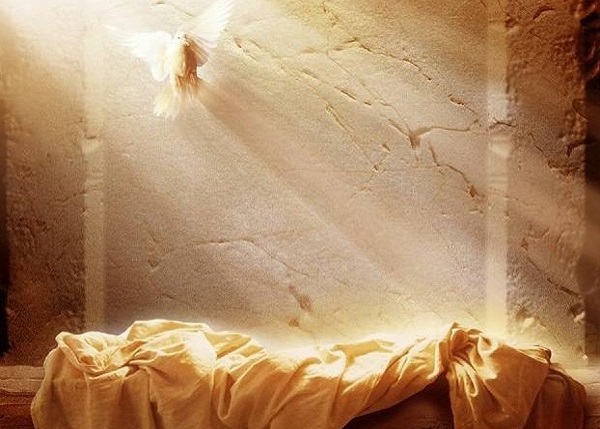I Await the Resurrection of the Dead (part 1) (Holy Monastery of St John the Vaptist, Kareas Attikis)
14 Απριλίου 2018
It’s the event that each and every one of us can be absolutely sure of: sooner or later death will come to us. Yet, for most people, the end of life remains greatly undesirable and is to be firmly resisted.
This is because, during the course of our life on this earth, we haven’t been nourished on the expectation of ‘the beyond’ and we don’t rely on the cornerstone of hope in Christ. As descendants of Adam, we’re surprised by the phenomenon of death, because we were certainly created for eternal life. And when we see the body of a loved one lying without breath, this shrouds our own hope, too.
Today, particularly, people are intent on what can be seen, what can be proved in the laboratory or can be proposed as a given, something beyond doubt. This is why they’ve lost all interest in what happens after death and, in particular, why any hope of resurrection and immortality has died within them.

Saint John Chrysostom points out the following strange phenomenon: a sower invests his livelihood in fresh earth, which he ploughs deep and feeds abundantly with good-quality seeds and hope. The fact that the seeds will rot and disappear for a time doesn’t concern him in a negative way, nor does it rob him of his expectation of new growth and a fine harvest. But when we have to lay the lifeless body of a person we love in the freshly-dug earth, we don’t feel the same hope and certainty as the sower. Then, the absence of the external signs of life is equated with irrevocable loss. This is because we don’t have within us the vision of ‘eternal spring’ and the joy of the expectation of that longed-for day ‘which has no evening’. People ‘of this age’ have become so one-dimensional that they’ve become used to defining everything in terms of natural laws.
This human drama, which assumes various forms at different times, has as its starting point ‘that unmentionable day’ of the fall of Adam and Eve. Through their disobedience, they severed their relationship with the ‘Source of Life’, fell from God-like beauty and came face to face, once and for all, with the stench of death.
Holy Scripture reveals to us the devil, the wicked source, the ‘inventor’ of death. People don’t believe, however, and ‘are foolish and slow in their hearts’ (Luke, 24, 25). They don’t readily accept Christ’s Resurrection, so when the angel says: ‘He has risen; he is not here’ (Mark 16, 6), it means nothing to them and doesn’t reassure them concerning their own resurrection.
The lack of faith among people today centres largely on the resurrection of dead bodies. This is because they don’t know that death, that ‘condign punishment’ held sway and had destructive power only until that roseate dawn on ‘the first day of the week’ when the women found Christ’s tomb empty (Mark 16, 2). Because the risen Lord had overthrown death and ‘opened again the gates of paradise’. At that dawn, exiled Adam crossed blithely to the other side, stepping on the Cross, on the ‘bridge of life’, following the risen Word and God.
Christ’s Passion and Resurrection are mutually linked and mutually fulfilling events which are the culmination of His redemptive activity on earth. Just as Christ’s Resurrection is a concomitant of His death on the Cross, so, too, our passage from our earthly life into eternity isn’t annihilation, but the transcendence of earthly corruption and the ‘investiture with incorruption’.
The Resurrection of the dead is a fundamental truth of our faith. Saint Paul says that, without the certainty of our resurrection, our faith has no meaning and is pointless (I Cor. 15, 17): ‘If there is no resurrection of the dead, then Christ has not been raised; and if Christ has not been raised, then our proclamation has been in vain and your faith has been in vain…. But in fact Christ has been raised from the dead, the first fruits of those who have died. For since death came through a human being, the resurrection of the dead has also come through a human being; for as all die in Adam, so all will be made alive in Christ. But each in his own order: Christ the first fruits, then at his coming those who belong to Christ’ (I Cor. 15, 13-23).
Death, then, has been conclusively defeated and the resurrection of the dead is a given. This is why our holy Fathers speak with certainty of the spring which is sure to follow winter’s decay, the corruption and decomposition brought about by our death in the body.
We shall certainly live again in the body, but in another form (Mark, 16, 12). We shall rise and not one of us will ever again be subject to the law of corruption and annihilation. Jeremiah’s conversation with God is very much to the point here: The word that came from the Lord to Jeremiah, saying, ‘Arise, and go down to the potter’s house, and there you will hear my words’. So I went down to the potter’s house, and he was making a vessel on the stones. And the vessel he was making with his hands fell: so he made it again into another vessel, as it seemed good to him. And the word of the Lord came to me, saying, ‘House of Israel, shall I not be able to do to you as this potter has done? You are like the clay of the potter in my hands’.
What is important is that the Potter is our Pre-Eternal, All-Good, Almighty Father. This is why we set our hope on Him even from this life here, as a foretaste of eternal life and His Kingdom outside time.





